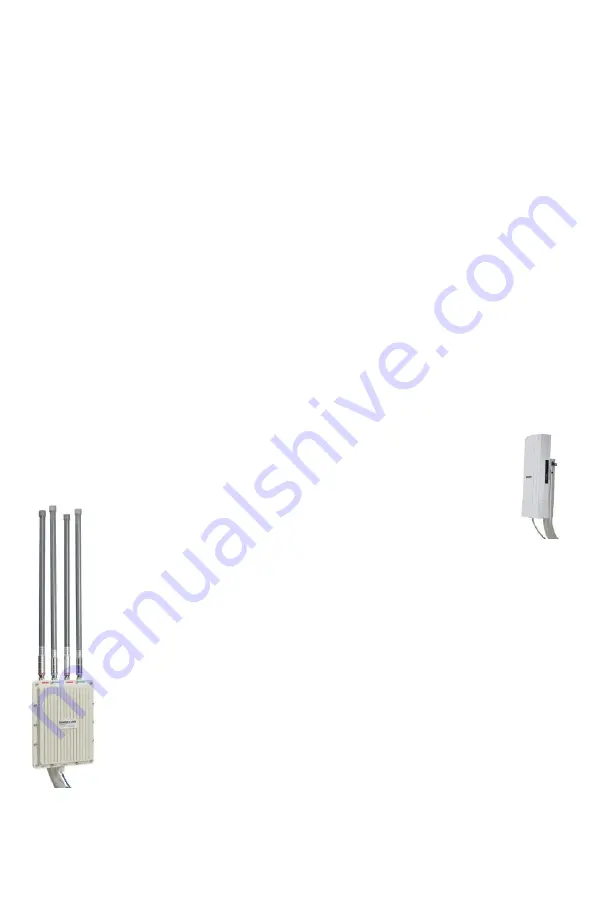
23
Mesh Repeaters & Mesh Node Status Display
CheckBox meshing access points are
self-configuring. As long as they can receive
a signal from one of their peers or the they will establish a connection among
themselves and actively determine the best route back to the unit.
These meshing access points can run as wired access points,
connecting back to your CheckBox Controller with a wired
connections, or as wireless meshing access points, connecting
automatically back to the controller wirelessly. When run in a
wireless mesh configuration the access points do need to be connected to a
nearby power source. Performance in wireless meshing mode will depend
upon the signal strength of the wireless signal received from the system as
well as noise and wireless interference. Generally overall throughput will not
be as good as if the access points were wired; wireless meshing works best
in applications where running a connection back to the controller is not
possible.
IMPORTANT
: The first time a mesh repeater is added to the network it will
show up highlighted in
blue
in the mesh status display. Until you click on
this repeater to accept it into the system it can not service clients or pass
traffic. You must click on blue units to allow them to join the system. This
only needs to be done once, and after a unit has joined the system it will be
remembered by the system, even after power failures or prolonged storage.
Labeling the repeaters here makes it easier to remember where they are
located.
Once your Mesh Repeaters are in place you can monitor their status by
selecting
Mesh
on the top menu.
You can check the status of your repeaters by clicking on
the Mesh button on the top menu.
The first column identifies the repeater unit by it’s MAC address, the electronic serial
interference in the area?
On a flat open field with no interference a signal can travel up to 1000’. When we start
adding walls, other devices and users, that distance will begin to shrink.
For example, a hotel with two wings each 200 feet long and three floors per wing, made of
rebar reinforced concrete, might need 16 or more meshing access points to provide solid
coverage. Another hotel, constructed of wood but with similar dimensions, may only need 8
meshing access points to provide coverage.
Another example would be a campground that is on an open flat field. To provide complete
coverage however you need to penetrate the aluminum skin of the RVs coaches which
might require meshing access points spaced every 200 feet, so that no RV is more than
100 feet from a unit.
If that hotel happens to be at the end of an airport runway with a radar system nearby or
that campground has a cell tower in the middle of the property then interference from those
devices may require additional units to overcome the interference.




























